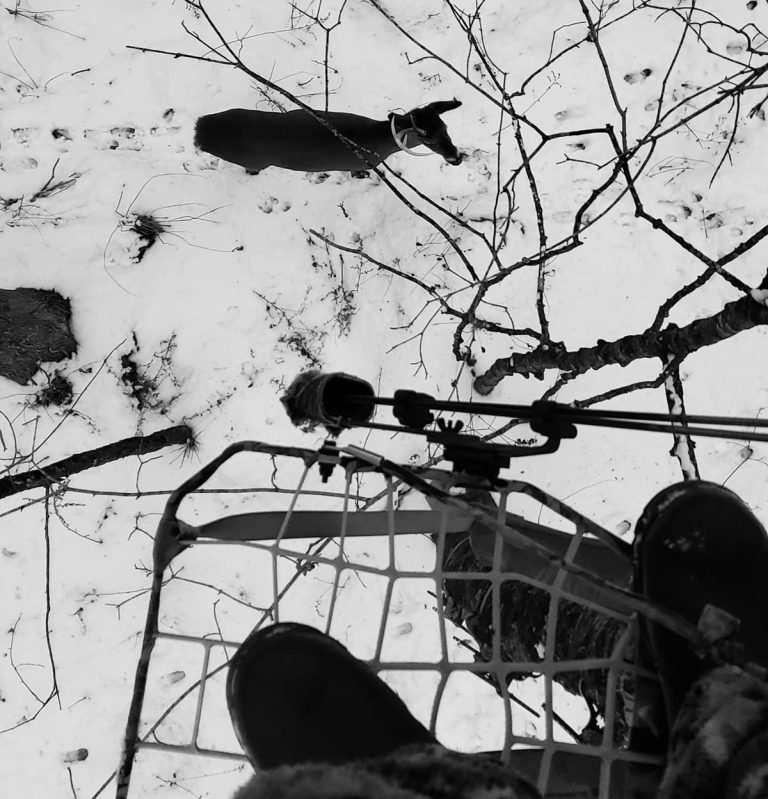The wind was blowing just enough that it felt like a knife was cutting through any exposed skin, the temperature was about 10 degrees Fahrenheit. It was around 3 in the afternoon, and I had been in the blind for about an hour. I was sitting over a 2-acre soybean field that I had scouted the past few nights. The forecast was calling for a big snowstorm to roll in around 7 if I remember right around 6 plus inches of snow. As I sat watching the 2 sides of timber, I recall I contemplated my own sanity.
In my area of the country, most whitetail hunters have 3 seasons – early season, the rut, and gun week. After that they hang up their camo put away whatever weapons they had used and reminisce on the past hunting season. They call me crazy to continue hunting, but our bow season runs till the first weekend in February, and they miss some of the best hunting of the year.
Sure, the deer have been pressured all season and they are a little more on edge. Sure, you must be a little more methodical in your approach to each hunt. And yes, the weather can be downright brutal, but these are the conditions you want. The nastier the weather the better the hunt. Whitetail are slaves to their stomach and in the late season they need to pack on the calories to survive the harsh weather. The only 3 things on their mind are food, security, and warmth. Late season is the perfect time to chaptalize on these weakness of a whitetail buck.
Back to my hunt. As I sat there contemplating my sanity, the first few does popped out of the corner of the timber. It was about 2 hours before dark. I watched them feed in the beans for quite some time and slowly more and more deer trickled into the field. By around 430 there were 22 deer feeding mostly within 60 yards of the blind I was in. It was a good mix of does and a few smaller bucks. Nothing I wanted to release an arrow at from my Barnett HyperRaptor, but I knew the best was yet to come. With about 20 minutes of last light, I caught a glimpse of movement in the timber. As I raised my Hawke optics binoculars, I recognized a big 8 and a wide 10 point coming out to feed. Both of these bucks I had been chasing all fall were grouped back up and about to enter the bean field. As I sat and debated which one I wanted to send a bolt through if given the opportunity, out walks one of the biggest whitetails I have ever seen in person. My mind was made up if given a shot opportunity he was the one. I just need him to close the distance and fast. I had about 4 minutes of shooting light left. As fate would have it all I could do was sit and watch the sun drop on this magnificent whitetail till it was dark.
I sat that blind a handful of times the remainder of that season hoping to lay eyes on that buck again. I was never fortunate enough to cross paths with him a second time, but he taught me a valuable lesson. Late season food sources can bring deer from long distances given the right conditions and some of the best hunting is truly in the late season. Let’s break down how to hunt the late season from the weather to the gear so you can hopefully tag that buck of a lifetime, while all your buddies are at home watching football from the couch.
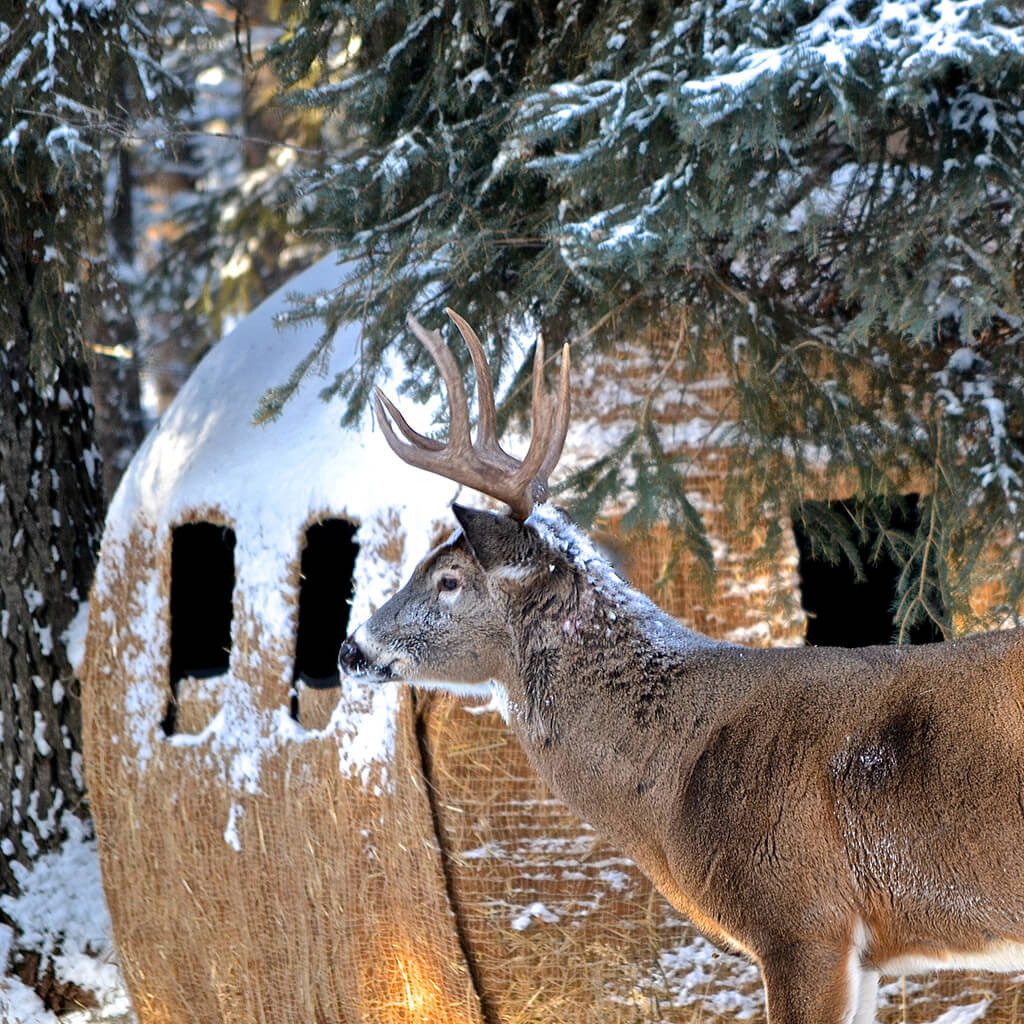
Food
Food is everything this time of year. Deer are slaves to their stomachs and the feed to bed, and bed to feed pattern will work better than ever this time of year. The key to capitalizing on this is scouting and watching the weather which is what we will discuss next. If you can plant food plots now is the best time to hunt over them. I plant Frigid Forage Big-N-Beasty as my preferred late season food plot. This is the perfect mix of 4 high protein food sources.
Another great late season food source is soybeans. On one of the spots I am unable to plant food plots, I will buy a half-acre to a couple of acres of soybeans from the local farmer, at fair market value. They are a deer magnets this time of year. Winter wheat is another great option as far as agricultural fields go. When hunting food sources, I like to hunt out of a blind. I use Redneck Blinds because they withstand the weather and keep you out of the elements on those cold, nasty weather days.
If baiting is legal in your state, this can be another great way to hunt late season. I have found running a corn deer feeder on a timer in the late season is like ringing a dinner bell for the local deer herd. It is a great way to pattern deer and if hunting over them is not your thing, it is a great way for them to find easy food with little pressure.
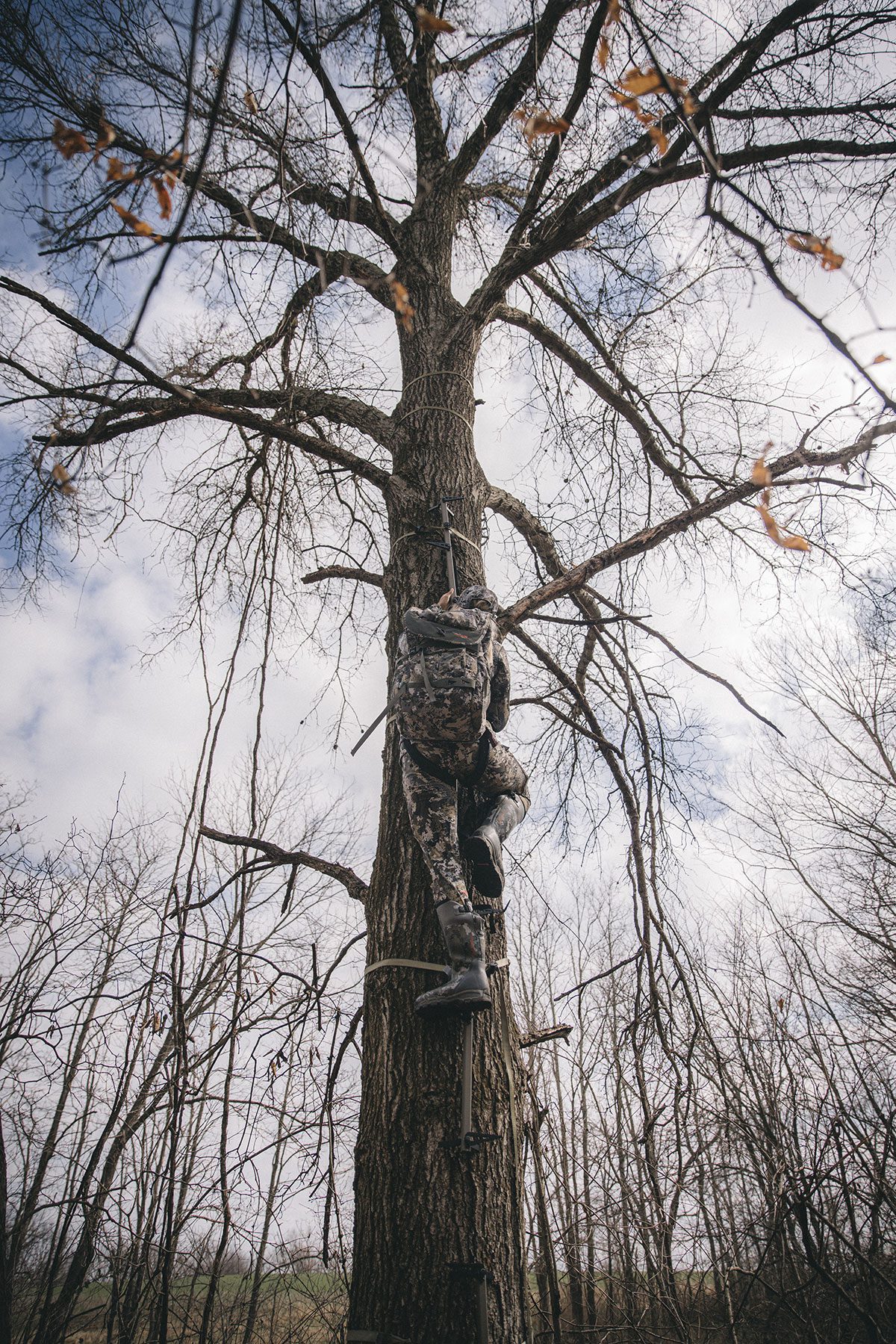
Weather
Nothing influences deer movement more this time of year than the weather, especially weather events. Like human’s, deer burn calories all throughout the day. Most days you will find them bedded on south facing slopes soaking up the sunlight burning as few calories as possible during day light hours. Once the sun goes down, they will head out to their preferred food source and pack on the calories they used throughout the day.
Any time there is a weather event this time of year, everything changes. The 3 main types of weather events that are key to hunt are snowstorms, high winds, and colder than average days. The reason being is that they all trigger deer to feed heavily before and after each event. They will often be on their feet several hours prior to sundown packing on as much food as they can to conserve those calories to make it through the weather event. Then as soon as it passes, they feed heavily to make up for the calories, they burned bedded down during the event. I like to keep a close eye on the weather this time of year even if I am tagged out. Once a system arrives, I will scout the area from afar and see what bucks have made it through the season, and the general health of the herd.
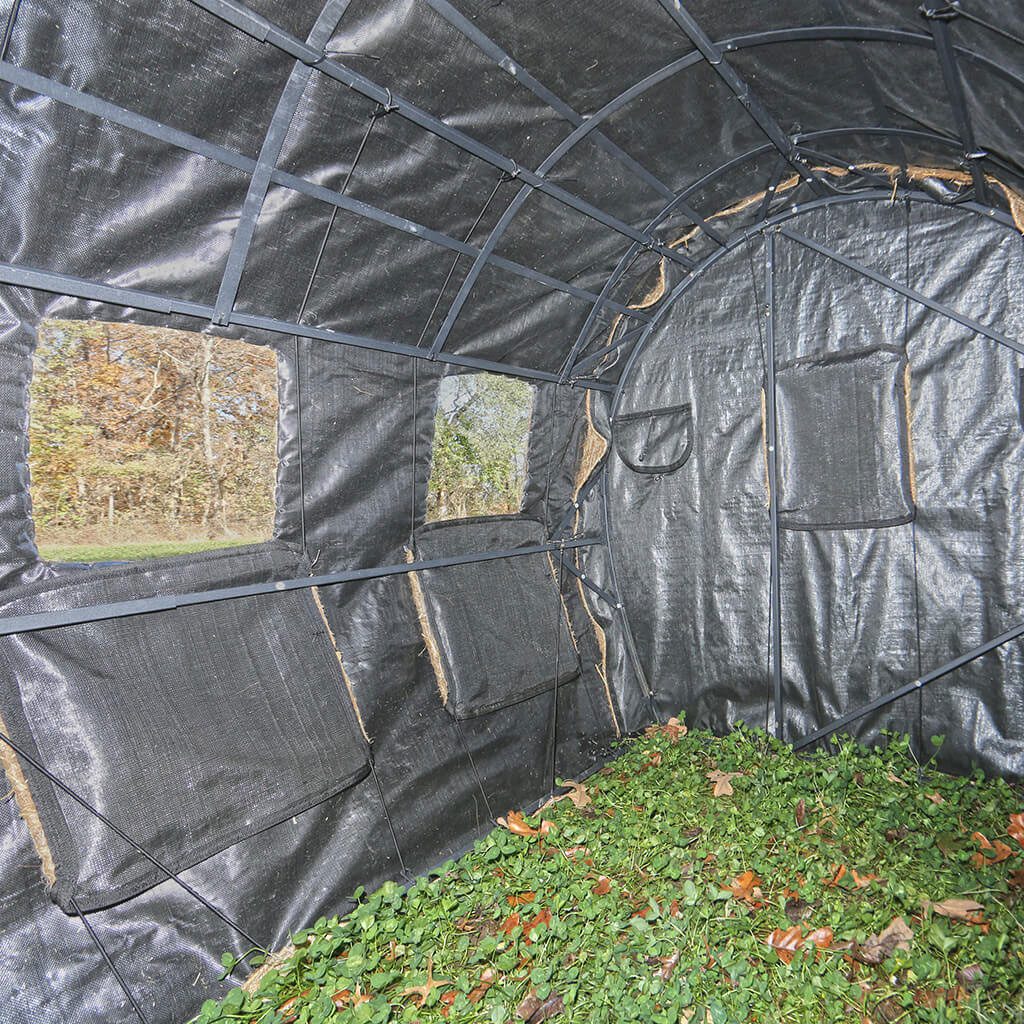
Read about Best Blinds: Warrior Down and Out Ground Blind
Clothing
Nothing ruins a hunt faster than getting cold. You spend all that time scouting and all that money on your bow and other hunting gear, make sure you don’t neglect your clothing. Hunting clothing has come a long way since I first started hunting. Instead of having to wear several layers of clothes in and a backpack to get some more or ditch some during the hunt, I now have a layering system composed of an inner layer and out shell that keeps me comfortable and warm the whole entire hunt.
With all the companies producing camo these days it can be a little bit overwhelming to figure out what works best. I have tried several different companies over my hunting career like ScentLok, Nomad, First Lite, Redhead, and Sitka.
It’s hard for me to pick a favorite company to recommend but I tend to find myself primarily using my Sitka and Nomad camo. It’s hard to beat their products. Sitka built each of their systems with a hunter in mind. From the fit to the fabric, they make excellent cloths and well worth the money. As for Nomad it’s hard for me to part ways with their base layers because they are incredibly warm and comfortable.
When selecting camo for the late season, keep these things in mind. You want to select something quiet, waterproof, and wind proof. I like to use some sort of fleece fabric as I have found this to check all the boxes. You want to make sure you have base layers that are moisture wicking and have a tight fit. Lastly, make sure you have a good pair of insulated boots and good wool socks. Your feet are usually the first thing to get cold, and that’s the last thing you want.
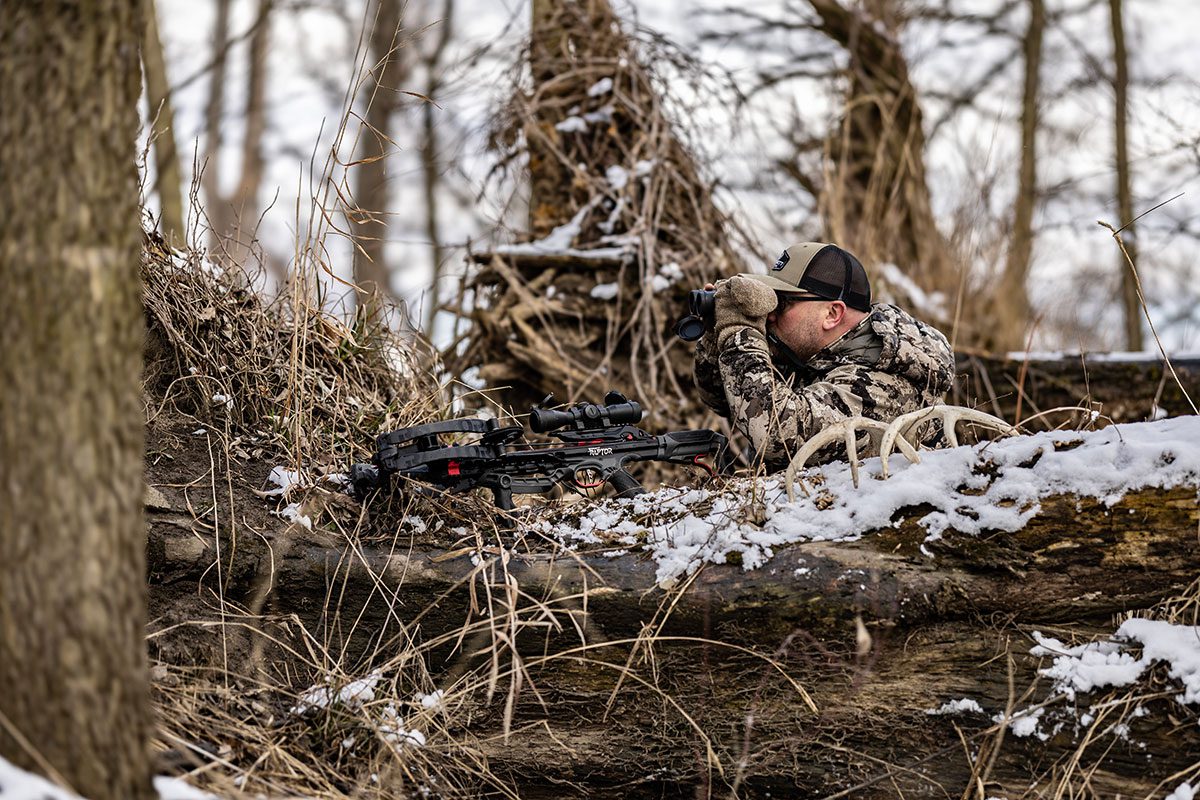
Gear
When it comes to late season gear there are a few things I consider must haves for the stand or the blind. The first is a good quality cell camera. This is important to keep you updated on deer activity especially over a food source. I like to keep my Moultrie Mobile Edge Pros running over my food sources and on primary travel routes. This will tell me exactly what the deer are doing making sure each hunt is a high probability hunt. Next up is hot hands or even heated clothing. I never leave the truck without heated hand warmers, having warm finders in everything. As far as heated clothing goes, I occasionally get out my heated vest from Pnuma when the temps drop drastically. This keeps my core warm which in turn keeps the rest of my body warm – along with the best heated pants the hunting industry will offer. I mainly use that when hunting from a tree stand. When hunting from a blind I take my portable buddy heater in. This little vent free portable heater is enough to keep me warm for a whole day of hunting.
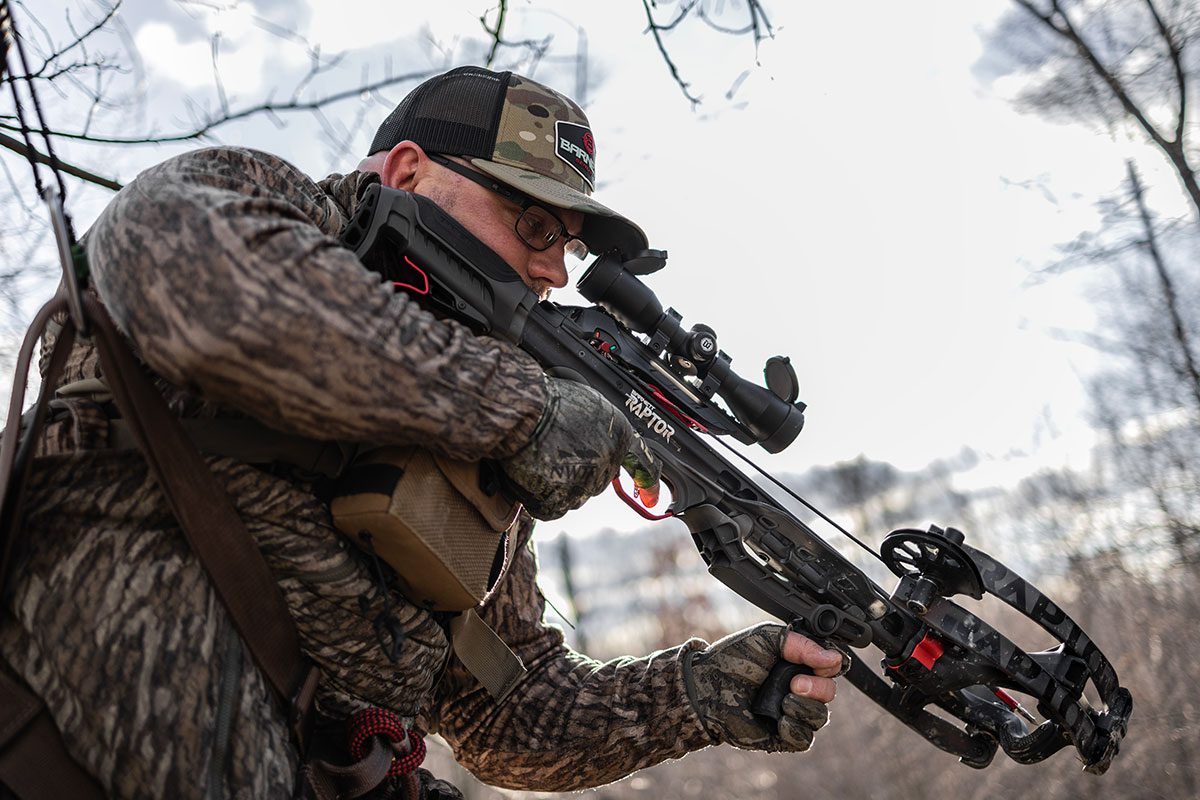
Stand or blind
Deciding how to hunt the late season can be a tough decision. Blinds can offer comforts that a tree stand can’t compete against, while a stand can give you an advantage blinds cannot offer. I think there is a place in time for each style of hunting. Let’s start with a blind. Whether elevated or on the ground, they both can offer some great benefits like a wind block, scent control, ability to run a small heater, and even a roof over your head if there is precipitation. While all this sounds great, they do have some limits. The first is that it needs to be in a spot that will afford you an opportunity for a shot. I like to place my Redneck Blinds Haybale blind on the best food sources I have in the area in the late summer. I do this intentionally so that the deer get used to it. Sure, I won’t hunt it till the late season but by then the deer won’t think twice about it sitting there. The other big drawback to blinds is the ability to see longer distances and get closer to cover. This can be a deal breaker depending on your hunting location.
As for tree stands, the real benefit is the ability to pack it in and hunt anywhere you want. I like to take my Hunting Beast Gear sticks and stand into properties that may not have the preferred food source but are a pass-through location between bedding and the food sources. I will scout the area to figure this information out before making my move. With the advancements in modern day hunting clothing from companies like Sitka and Nomad beating the cold and wind is an easy thing. The most important thing to take into consideration is cover and access when hanging the stand. When deer are bunched up in large groups and have been pressured all season long, the last thing you want to do is spook one and clear the whole field before ever getting a shot.
Often if you have the preferred food source in the area for whitetail, during late season, you will draw in bucks from long distances.
Keep in mind still hunting from the ground can also be another great way to hunt late season if the conditions are right. On windy days especially with precipitation if can be a perfect scenario to hunt from blow down trees or patches of cover. If you locate a buck with these conditions don’t be afraid to put a stalk on him, especially if he is alone. Just keep the wind in your face and take your time, the slower the better. You can’t get away with as much in the late season due to lack of cover and the pressure the deer have already faced all season, but that no excuse not to try to make a move on a buck if you still have a tag to fill.
In Closing
Late season has many challenges that you don’t have to deal with in the early season or during the rut. The cold, the wind, the pressured deer, the lack of cover, and the list goes on. With the right clothing and some good scouting there is no need to hang up the bow after the rut, especially if you still have a buck tag to fill. Late season can present some of the toughest hunting of the year, but it can also lead to some of the best hunts of the year.
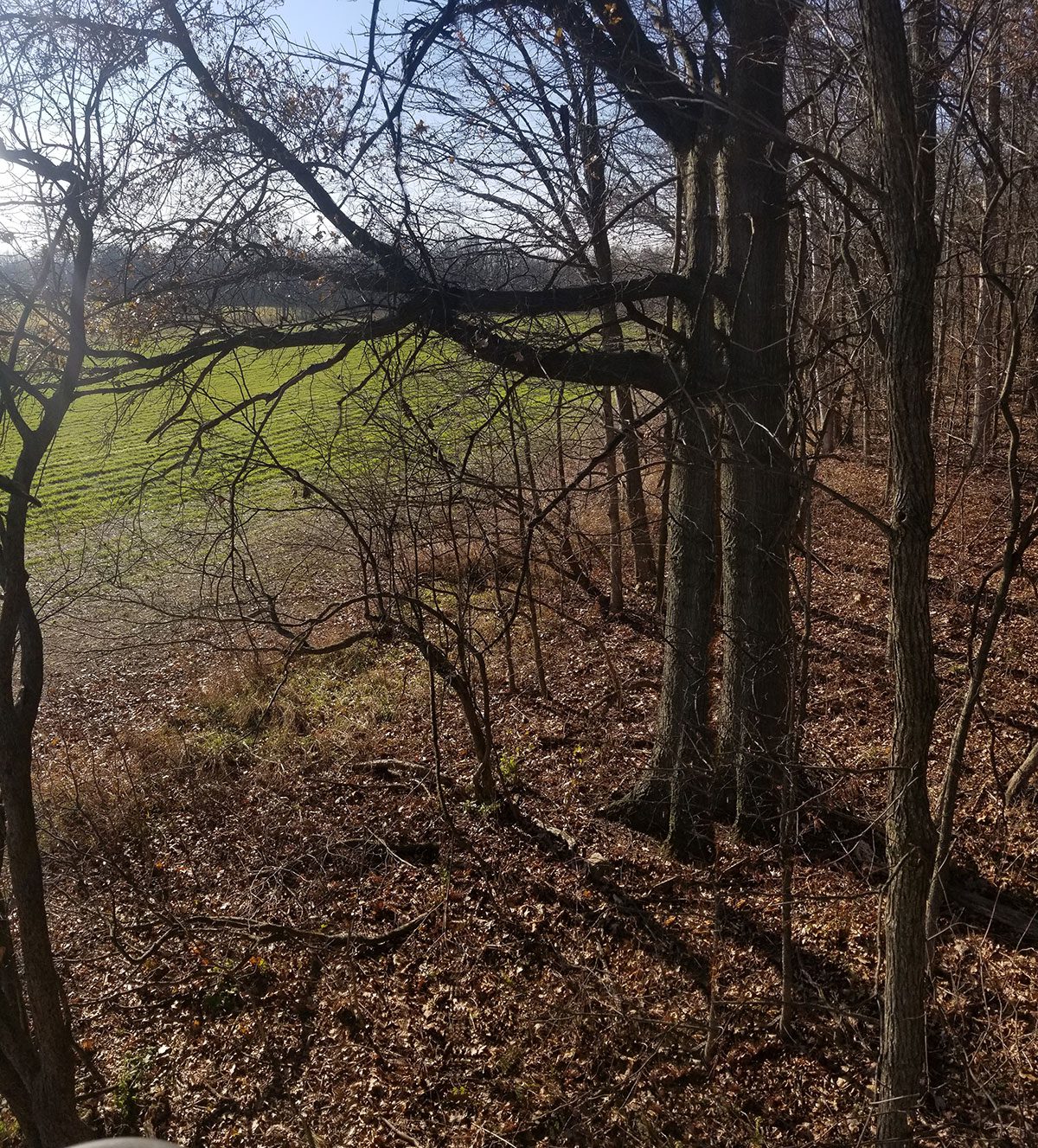
Per our affiliate disclosure, we may earn revenue from the products available on this page. To learn more about how we test gear, click here.



